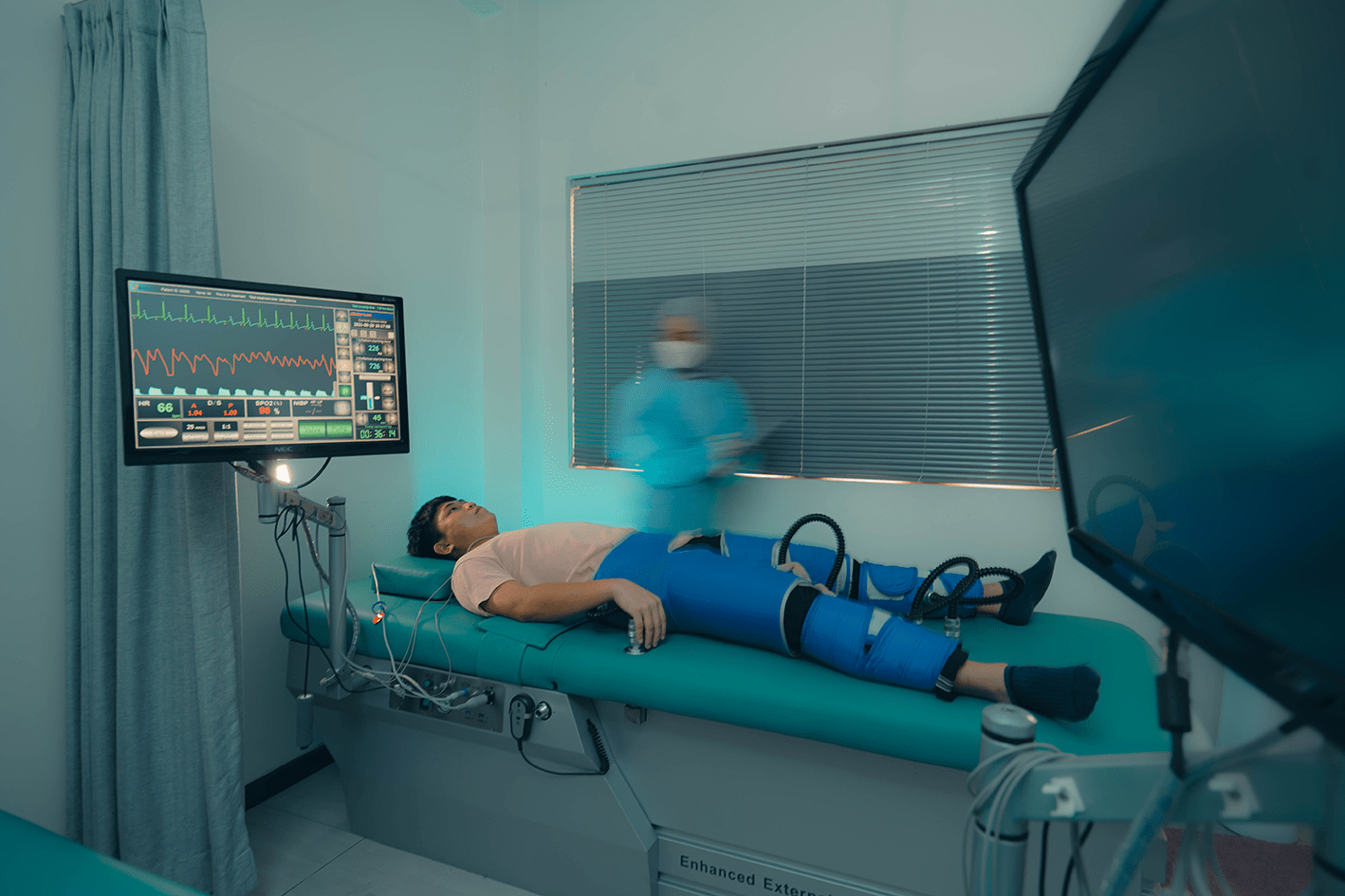SKIM PEDULI KESIHATAN
Enhanced External Counterpulsation EECP
What is EECP?
Enhanced external counterpulsation (EECP) is a procedure for the treatment of angina, heart failure or cardiomyopathy. It reduces symptoms of ischemia, and enhances the functional ability and quality of life of the patient.
EECP is a noninvasive procedure that uses inflatable cuffs to compress the blood vessels of the lower limbs. These cuffs are placed around the calves, thighs, and buttocks of the patient. In this procedure, the blood flow in the coronary arteries is increased.
EECP is enhanced by computer technology, blood pressure monitors, and electrocardiography. These facilitate accurate timing of the inflation and deflation of the pressure cuffs with the heartbeat and blood pressure of the patient.
How is EECP Performed?
The patient’s systole and diastole of the heart are measured by placing three ECG stickers on the patient’s chest.
The patient is required to lie down on a bed.
The patient’s calves, thighs, and buttocks are wrapped around with blood pressure cuffs.
When the heart relaxes at the precise time of diastole, the cuffs start inflating from the calves, moving upwards to the buttocks. This leads to a counter pulsation of the blood.
When the heart contracts, the cuffs quickly deflate and relax. The sensation may feel like a firm massage.
How to Prepare for EECP?
The patient is required to wear tight-fitting clothing such as athletic tights to avoid chafing.
The patient is asked to stop smoking and using tobacco products.
The patient’s blood pressure, pulse, breathing rate, and weight are determined and recorded.
The patient’s legs are checked for symptoms of possible vascular problems.
The patient is informed about the benefits and risks of EECP by the healthcare team.
The patient needs to sign a consent form before the procedure.
Benefit of EECP:
- Decreases the amount of work needed by the heart to pump blood (cardiac workload).
- Improving vascular health (Endothelial Function).
- Increase coronary blood flow of the heart muscle.
- Increase the volume of blood pumped by the heart (cardiac output).
- Increase anti-inflammatory effects.
- Increases the flow of oxygen and nutrients and improves organ function.
- Promotes blood vessel formation (Angiogenesis).



